Chapter 3
Mind-altering illnesses
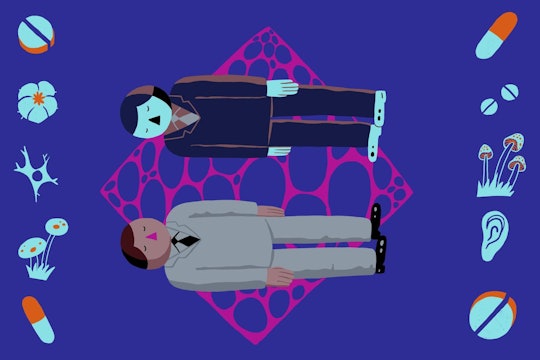
How common are non-psychedelic hallucinations in the general population?
There’s thought to be some overlap in the neural pathways involved, but ultimately it’s unclear. In some cases drugs and disease can target the same things, though likely in different ways. The similarities aren’t always certain and further research is certainly needed.
For the purpose of diagnosis, hallucinations were once assessed as simply being 'present' or 'absent.' Over the last few decades, however, evidence has mounted that hallucinations occur widely in many different ways and intensities, and often outside the bounds of sickness and health.
Situational hallucinations
Sometimes, they're situational. People going through a bereavement report hearing or seeing deceased loved ones soon after their passing. People who are sleep deprived can also experience hallucinations. For this reason, hallucinations cannot be considered as an invariable "all-or-nothing" sign of illness, but rather, exist on a symptomatic continuum between nonclinical individuals and those with certain clinical disorders.
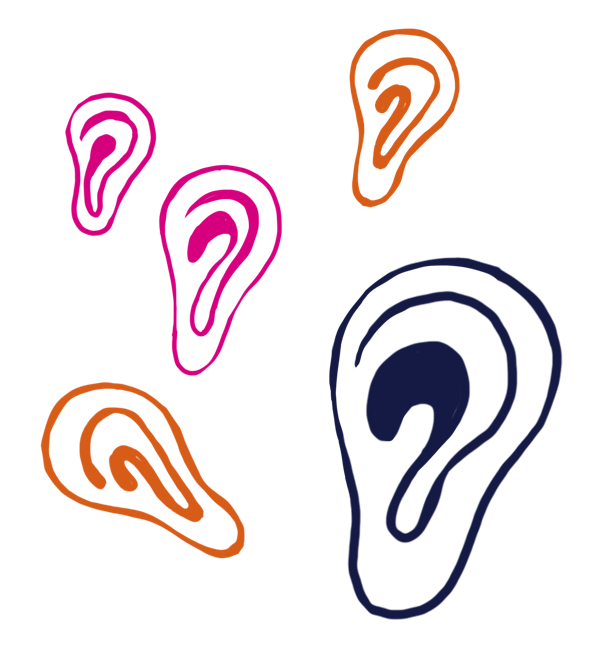
In 2015, psychiatrist John McGrath, director of the Queensland Centre for Mental Health Research, published a study on 31,261 people (aged 18 and older) across 18 countries and reported that 5.2 percent of participants had experienced a hallucination at least once in their lifetime. The most common overall type was visual hallucinations (3.8 percent), followed by auditory (2.5 percent). Lifetime prevalence estimates were higher for middle- and high-income countries than low-income countries and higher in women than men.
Another study showed that hallucinatory experiences were more common amongst people living in urban areas compared to those living in rural areas. Another study went further, showing that neuroticism, victimization experiences, and below-average IQ are also possible risk factors for the experience of hallucinations among clinical and non-clinical groups.
A hallucination spectrum
Various self-report questionnaires have been developed to explore the prevalence and characteristics of hallucinations in both clinical and non-clinical groups. One of the most popular is the Launay-Slade Hallucinations Scale (LSHS), created in 1981 by Gilles Launay and Peter Slade. Over the years, it has been adapted and now includes five main components: sleep-related hallucinations, vivid daydreams, intrusive or vivid thoughts, auditory hallucinations, and visual hallucinations.
Thirty years of studying hallucinations in clinical and non-clinical populations using this scale has revealed a number of differences in how the two groups experience the same hallucinations, supporting the "continuum hypothesis" of hallucinations. One study, for example, found that non-clinical participants experienced more hallucinations relating to sleep like "I'm half asleep, not quite asleep nor fully awake, and I hear people calling me by my name," whereas clinical participants experienced more auditory verbal hallucinations like "I hear a voice that asks me to do something or tells me something about someone."
Numerous studies suggest that similar mental processes are behind hallucinations in psychotic and non-patient populations. Auditory hallucinations, for example, likely happen when inner speech is mistaken for that of another person.
In one study, schizophrenia patients with auditory verbal hallucinations were asked to read single adjectives aloud under different conditions: reading aloud by themselves, reading aloud with acoustic distortion of their own voice playing back into headphones they were wearing, someone else's voice played back, or someone else's voice with distortion played back. They were then asked to identify the source of the speech as 'self' or 'other.' Compared to a non-psychiatric control group, the schizophrenia patients were particularly prone to mistaking their own distorted voice for someone else's.
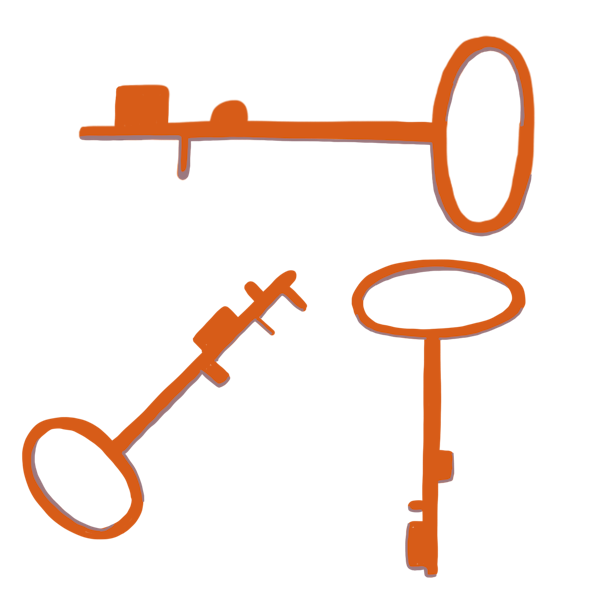
A similar attribution bias has been described in otherwise healthy hallucination-prone participants too. In another study led by Professor Frank Larøi at the University of Liège in 2004, participants were given a reality monitoring task, in which they were asked to identify the source of presented words that had either been previously presented by the experimenter, generated by the subject, or were entirely new. People that were more hallucination-prone made significantly more errors identifying the source of the words.
In an interview with the BBC, neuroscientist Kelly Diederen at the University of Cambridge explains how research using brain-scanning techniques on "healthy hallucinators," has revealed differences between this group and a control group of individuals who do not experience hallucinations. Individuals who do not experience hallucinations have activity on the left side of the brain, which is more often involved in language production. However in people with auditory hallucinations it's switched: there's much more activation on the right, where language formation is limited and engaged more in automatic language production, like reciting lyrics to a song or cursing when you hurt yourself. This increased activity in the brain's right side may explain why this population finds it difficult to distinguish the source of their own voices. Diederen has also published work to show that brain activation patterns during auditory hallucinations are similar in psychotic and non-psychotic individuals.
One way to explore the biology behind hallucinations is by studying hallucinogenic drugs. While some people naturally experience hallucinations, others induce them chemically. By applying what we know about the mechanisms of chemical hallucinations, we might find clues as to how hallucinations occur in healthy people and those with mental disorders.
What's the overlap between biological and drug-induced hallucinations?
They’re relatively common, but are usually benign. Hallucinations aren’t a matter of yes-I-hallucinate or no-I-don’t, but occur in a range of types, senses, and situations.
Three models – serotonin, glutamate and dopamine – trigger hallucinatory processes in different ways. An important question for developing effective treatments for mental disorders and the psychotic aspects of neurological diseases is whether these three receptors belong to the same overall neural circuitry that collectively induces hallucinations, or whether they belong to different, separate paths to hallucination. The answer seems to be that serotonin, glutamate, and dopamine are involved in overlapping processes, which lead collectively to hallucination as well as other psychotic symptoms. It is likely that the brain areas and extent to which these different pathways are active gives each hallucination its distinct characteristics. Another important point to consider is whether or not we can distinguish hallucinations from the other symptoms that constitute psychosis, such as delusions. It's unclear whether these symptoms are separate or combined states, resulting from the same or different chemical pathways and cognitive means.
The dopamine model
Imaging studies in the brains of people with schizophrenia suggest that they have increased dopamine activity in an area called the striatum, which is involved in various things, such as movement initiation, the feeling of reward, and social behaviors. By reducing the level of dopamine, symptoms like hallucinations are reduced. Thus, the dopamine model suggests that hallucinations in schizophrenia result from abnormally high dopamine in the striatum.
Some scientists insist that dopamine is the logical explanation for all psychotic states, whether experienced as part of a mental illness or neurodegenerative disease, or as a non-disease related phenomenon in healthy individuals. As such, psychostimulant drugs like amphetamine can induce hallucinations by increasing dopamine levels in the brain.
The glutamate model
Glutamate is the most abundant neurotransmitter in the brain. It is responsible for increasing the transmission of electrical impulses between neurons, and is involved in most brain functions including cognition, memory, and learning.
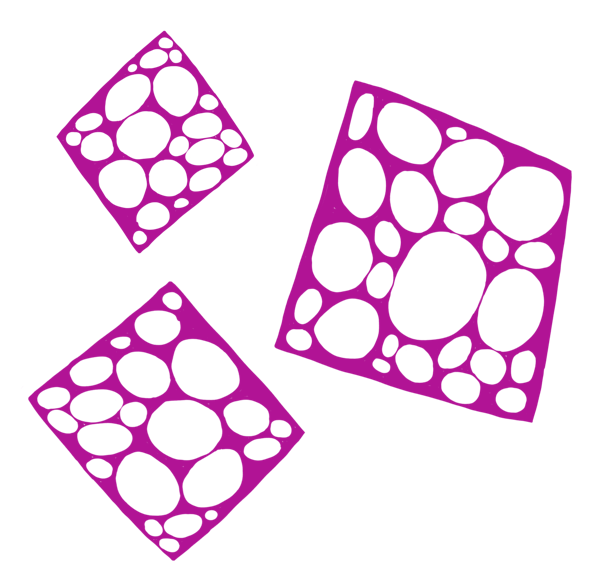
In the 1950s, a new class of anesthetic drugs such as PCP were developed, which could induce hallucinations. These were "dissociative anesthetics," named because of the dissociative symptoms – lack of connection in thoughts, memory, and identity – they also cause. Anesthetic drugs work by disrupting glutamate signaling in the brain by blocking one of the receptors that glutamate binds to.
Further research into the effects of drugs like PCP led to new ideas about what cause not only symptoms like hallucinations ("positive symptoms") in schizophrenia but other symptoms which are not explained by the dopamine model, like losing the ability to find pleasure in things that were once pleasurable ("negative symptoms") too. By better understanding how these drugs lead to different, specific behavioral effects, we can hopefully design smarter treatments.
The serotonin model
LSD and magic mushrooms are two of the best known and well-studied psychedelic drugs that induce visual hallucinations, synesthesia, and strange altered states of consciousness. Oliver Sacks described his own personal experience of taking LSD, and recalled a particularly vivid hallucination of a huge pear-shaped blob of pure indigo, appearing on the wall and then disappearing. (In The Minds Eye, Sacks also reports having a wide range of hallucinations after receiving surgery on his cancerous right eye. These hallucinations ranged from seeing black-and-white checkerboards to maps of "enormous, unknown cities.")
Unlike the dopamine and glutamate models, the pharmacological mechanisms behind these hallucinations are less clear, but there is evidence to suggest that it involves the overstimulation of serotonin receptors (5HT2AR) on cortical neurons. Overstimulation of this system is thought to disrupt the way we process information, resulting in neurological "glitches" that create aberrant perceptions. However, applying this knowledge to the role of the serotonin receptor in schizophrenia is problematic, because psychedelic-induced hallucinations differ from those in schizophrenia: visual hallucinations are typical of psychedelics, but auditory hallucinations more rare. Having said that, second-generation antipsychotics do target the serotonin receptor, suggesting that there are some similar underlying mechanisms.
How have mental disorders with hallucinations been treated in the past?
Mental illnesses have been described since ancient times. Before modern neuroscience, various religious or philosophical ideas were put forward for their cause. As time wore on, more and more scientific approaches were taken, but approaches used today like psychotherapy and medication were not developed until the 19th and 20th centuries.
Ancient Egyptian, Indian, Greek, and Roman writing describe mental illness as being caused by the wrath of the gods or evil spirits. Hippocrates, a Greek physician who was born in 460 BCE (where the Hippocratic Oath comes from), described physical and mental illness as stemming from an imbalance of what he thought were the body's essential elements — black bile, yellow bile, phlegm, and blood. In Hippocrates' writing, mental disorders were classified as Mania, Melancholy, Phrenitis (inflammation of the brain), Insanity, Disobedience, Paranoia, Panic, Epilepsy, and Hysteria. Hippocrates knew these disorders could have different presentations depending on their cause. Mania, for example, was attributed to either excess phlegm or yellow bile — excess phlegm was thought to lead to a quieter mania, while excess yellow bile led to a more frenzied and mischievous mania. Back then, treatment entailed releasing what was considered excess fluid through bloodletting, or by ingesting herbs to induce vomiting or diarrhea.
In the Middle Ages — from the fifth to 15th century — the first mental hospitals and asylums were founded in Baghdad and Cairo, followed later by hospitals in England and Spain. Many were initially privately run, and often religiously affiliated. They were generally described as caring institutions that provided entertainment for the patients (although some have still been described as restraining patients with chains). But mental hospitals didn't really become common in Europe until the 18th and 19th centuries, when public institutions were opened. The first hospital with psychiatric care in the United States — back when it was actually still a colony of Britain — was the Pennsylvania Hospital, which was founded in 1752.
The growth of cities in the 1800s led to a fear of people with mental illness as a threat to public safety and a created a boom in mental asylums as they were built to separate people with mental illness from the rest of society. As more patients became institutionalized, it also, however, allowed physicians to make close clinical observations, and new diagnostic categories were created. For example, Emil Kraepelin, a German psychiatrist, is credited with popularizing the diagnosis of "dementia praecox," which would later be called schizophrenia, and "manic depression," now known as bipolar disorder. The poor generally found themselves in public asylums, while the wealthy were able to attend private asylums with a retreat-like qualities including private parks, greenhouses, and sun parlors.
Wealthy patients with less severe mental health problems such as hysteria, sleep disorders, or alcoholism were able to see doctors instead of being placed in a asylum. One of the commonly used treatments of the 1800s was hypnosis, or putting patients in a trance-like state where they became highly suggestible, and using this to suggest more pleasant thoughts and behaviors. This led to the development of other interventions based on relaxation and suggestion collectively known as "psychotherapy." The term psychotherapy became used to describe any therapy that involves talking about psychological problems as a means of treating them.
Probably the best-known psychotherapy of the time was detailed by Josef Breuer and Sigmund Freud which they outlined in "the talking cure," a case study about a patient called Anna O. In it, they had the patient guide the treatment (which was unusual at the time) by talking freely about whatever was on her mind. Although it was unclear how effective the treatment was, the approach caught on and became refined into a form of psychotherapy called psychoanalysis, which explores how unconscious motivations and drives impact current functioning. This type of therapy became popular among the upper-middle-class in Vienna and is still used today.
In 1937, over half of all hospital beds were used for psychiatric care, so there became a push to develop new treatments. In the early- to mid-1900s new procedures were developed for patients especially those in psychiatric hospitals. One such development was psychosurgery, most (in)famously the prefrontal lobotomy, in which surgeons severed connections in part of the frontal lobe. Although the practice won a Nobel Prize at the time, it was soon recognized as largely harmful to patients, and less effective than subsequently discovered psychiatric medications.
In the 1950s, the “psychopharmacological revolution” in psychiatry began with the identification of two medications called chlorpromazine (a chemically-synthesized compound that affects dopamine signaling in the brain), and reserpine (a natural substance obtained from the root of a flower that affects norepinephrine, dopamine, and serotonin). These medications were found to be effective in treating psychosis, calming patients without making them unresponsive. The success of these treatments stimulated interest in psychopharmacological research and led to an explosion of new discoveries. There are now a number of broad categories of psychiatric medications available to treat psychiatric conditions.
How are mind-altering mental illnesses treated today?
Modern therapies can aim at different aspects of disease. In general there are three main approaches: medicines (potentially including hallucinogens), psychotherapy, or brain stimulation with electricity or magnetism.
Mental disorders are much more common than previously thought. By age 38, eight out of every 10 people will have met criteria for a mental disorder at some point during their life. And more and more, mental health is being viewed along a continuum, recognizing that there is no single ideal or "normal" state. That being said, there are many instances when treatment can have a significant positive impact in a person's life. In the case of altered perceptions (especially psychosis, which generally includes the inability to sense reality and can include hallucinations), mental health professionals can either aim to directly treat the disordered thinking or can treat other aspects of the disorder with the hope that once those aspects are treated, then the disordered thinking will go away. The particular approach depends both on the characteristics of the disorder and of the needs of an individual patient.
Overall, there are three common approaches to treatment: psychiatric medications, psychotherapy, and brain stimulation techniques. Oftentimes a combination of approaches are used for best results. For people experiencing mental disorder symptoms, it's important to see a mental health professional to get an accurate diagnosis. Then, the clinician will prescribe one or several of these evidence-based treatments.
Medications
The general categories of common medications for mental health conditions include antidepressants, anti-anxiety medications, stimulants, antipsychotics, and mood stabilizers. Generally in the case of schizophrenia or schizoaffective disorder the primary treatment of choice is with antipsychotic medications. Antipsychotic medications do not cure these disorders, but can make it so that people don't experience psychotic symptoms while they are taking the medication and/or make it so the hallucinations and delusions are less frequent and distressing. There are two general classes of antipsychotic medications that are split into "first generation" or typical antipsychotics (also called neuroleptics) and "second generation"or atypical, antipsychotics.

First-generation antipsychotics were discovered in the 1950s when chlorpromazine was used during surgery to augment anesthesia. In the course of these surgeries, it was serendipitously found that when the patient undergoing surgery had psychosis, that their psychosis seemed to improve as well. Doctors began giving the medication to psychotic patients and found that people who had been completely unresponsive would within hours begin having normal conversations with others. It was hailed as a miracle drug and began being used broadly in psychiatric hospitals around the world. Later studies would find that first-generation antipsychotic medication either eliminates psychotic symptoms or at least reduces them to a tolerable level for about 70 percent of patients.
Common first-generation antipsychotics include chlorpromazine (better known by the brand name )(Thorazine), haloperidol (Haldol), and fluphenanize (Prolixin). They work by blocking dopamine D2 receptors in the brain. Dopamine is a chemical that is used by the brain in communicating between neurons, and is used in a wide range of functions from movement to motivation to thinking and problem-solving. The problem with typical antipsychotic medication is that they can cause significant motor-related side effects similar to the symptoms of Parkinson's disease. This led researchers to search for medications without these side-effects. These medications were called second-generation antipsychotics.
Second-generation antipsychotics were developed in the 1960s but didn't come on to the market until 1990. These drugs generally impact dopamine as well as another neurotransmitter -- for example, blocking serotonin 5-HT2A receptors or noradrenaline receptors in addition to dopamine receptors. Overall, these drugs seem to make it so that just enough dopamine receptors are blocked in a part of the brain called the basal ganglia that is involved in motivation and movement, leading to therapeutic effects without causing motor side effects (although these drugs tend to have greater metabolic side effects). Common second-generation antipsychotics include aripiprazole (Abilify), clozapine (Clozaril) risperidone (Risperdal), quetiapine (Seroquel), and olanzapine (Zyprexa).
Since these approaches treat symptoms, but do not cure the illness, over 40 percent of people end up needing to be re-hospitalized. There is a push to find longer-acting treatments and to help people to stick to taking their medication regularly long-term. Psychotherapy approaches have shown some promise in this regard.
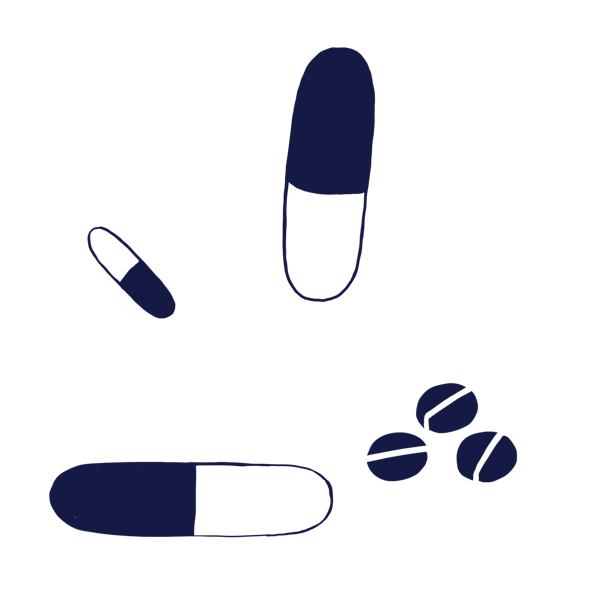
In addition to antipsychotics, there is evidence that antidepressants can be an effective treatment for depression with psychotic symptoms. Many antidepressants are SSRIs (Serotonin Selective Reuptake Inhibitors) which block the removal of serotonin in the synapse, leading to more serotonin that is available to affect neuronal signaling. Mood stabilizers can also be an effective treatment for the psychosis that sometimes accompanies bipolar disorder. For example, lithium, is a common mood stabilizer used in the treatment of bipolar disorder, has been found to be similarly effective for bipolar disorder whether with and without psychosis. It both decreases excitatory neurotransmitters such as dopamine and glutamate, and increases inhibitory neurotransmitters such as GABA.
Many of these medications are non-specific, meaning that they affect more than one chemical in the brain, in more than one area of the brain. This may also be why some of these medications can be used to treat more than one disorder and also why they have side effects. Pharmacological treatment should not be “one-size-fits-all,” and sometimes it's necessary to switch medications, with the guidance of a psychiatrist, until an effective medication regimen with minimal side effects can be found.
Psychotherapy
There are a number of effective psychotherapy approaches for disorders with alterations in perception or cognition. In fact, it might be said that many if not all disorders include distorted thinking in some way. For example, in depression (even without psychosis), many people tend to have negative biases where they focus on sad or angry facial expressions instead of happier expressions, and have better memory for sad words over happier words. In fact, a major theory about depression is that it is maintained by overly negative interpretations of events, and that by carefully examining the evidence for or against these interpretations through a form of therapy called Cognitive Behavior Therapy (CBT), a person can develop skills to notice and interrupt these negative biases.
Other alterations in perception can also be helped with psychotherapy approaches. For example people with PTSD can have flashbacks where they feel like they are re-experiencing a traumatic event and may even lose touch with where they are in the moment. Two common psychotherapy approaches for PTSD are called Prolonged Exposure (PE) Therapy and Cognitive Processing Therapy (CPT). PE involves recounting the traumatic memory multiple times and processing the experience with a therapist, as well as confronting trauma-related stimuli that are safe, but that the patient is avoiding (e.g. avoiding all public transportation if a traumatic event happened on public transportation). In CPT, the patient and therapist explore why the trauma occurred and how the trauma has impacted the patients' beliefs. These therapies may work by re-activating fear memories in such a way that they feel less overwhelming, leading to increases in regulatory regions of the brain such as the prefrontal cortex that are involved in planning and problem-solving and decreasing activity in areas that react to our environment, such as the amygdala. A 2015 study found that 49-70% of military vets going through these gold-standard psychotherapy approaches had clinically meaningful improvement in their symptoms, but 60-72% still met criteria for having PTSD after treatment ended, so there is still a need to improve our treatment approaches.
The alterations in perception that can result from sleep deprivation can be helped by another form of therapy called Cognitive Behavior Therapy for Insomnia (CBT-I). CBT-I, like other forms of CBT, aids patients in identifying unhelpful thoughts about sleep and working on developing alternative interpretations. CBT-I also includes other techniques such as teaching good sleep behaviors (e.g. not looking at a phone or tv while in bed, having a bedtime routine, etc.) and limiting the amount of time in bed.
The therapies listed above all fall under the umbrella of "CBT," but have different names depending on the specific techniques that are used. All CBT therapies have some things in common though, in that they look at the relationships between thoughts, behaviors, and emotions, and also are very active treatments (tracking thoughts and emotions, setting goals, etc.). Overall, many CBTs can be helpful either alone or in combination with medications for treating disordered thinking in its various manifestations.
Brain Stimulation
Other treatments are used when medications and psychotherapy have not led to adequate results. These therapies generally fall under the category of brain stimulation therapies, because they use electricity or magnets to affect signaling of the brain. They are most commonly used in severe depression, but may also be used to treat bipolar disorder and schizophrenia.
The brain uses both chemicals and electrical signals to communicate, so by influencing the electrical signaling of the brain, specially trained clinicians can enhance the functioning of particular brain regions or inhibit the functioning of other regions.
Two common forms of brain stimulation are Transcranial Magnetic Stimulation (TMS) and Electroconvulsive therapy (ECT). ECT has been around since the 1930s, and is often negatively portrayed in popular culture. This may be because it was initially more dangerous than it is today, and was historically used in abusive ways. The treatment is now much improved, and when used ethically, can lead to much-needed relief of symptoms for patients.
ECT is conducted by a psychiatrist and anesthesiologist. During ECT, the patient is first sedated with general anesthesia and a muscle relaxant. Then electrodes are placed either on both temples, or on one temple and the side of the forehead. (Generally, the temple and forehead combination is associated with fewer side-effects while achieving similar results). ECT creates a controlled seizure that lasts for about a minute across the brain. Then the patient is woken up about five minutes later. The process is often repeated about three times a week for several weeks, for a total of six to 12 treatments. Side effects may include headaches and some memory loss. While there are a number of hypotheses as to why ECT works, the bottom line is that scientists don't yet know the mechanisms of action.
Transcranial Magnetic Stimulation, on the other hand, is a targeted treatment that works by placing a magnet over a part of the brain. Generally, it targets the region on the upper forehead that is involved in problem-solving and mood regulation, called the dorsolateral prefrontal cortex (DLPFC). Short electromagnetic pulses are then applied to the skull to stimulate nerve cells in the DLPFC. The session lasts about about half an hour, and does not require anesthesia. Depending on results, patients may have a single treatment or a number of sessions. Common side-effects include dizziness and headaches. It's important to be supervised by a medical professional to avoid the risk of accidentally inducing a seizure.
Scientists are still determining how TMS works for treatment. Repeated TMS is thought to impact the brain in multiple ways, from subatomic changes in neuron structure to changing synaptic plasticity.One study found that TMS decreases activity in a brain network referred to as the Default Mode Network (DMN), which is involved in mind-wandering and seems to be over-active in depression and other disorders (hallucinogenic drugs like ayahusca have a similar quieting effect on the DMN). This may explain why TMS is effective at reducing hallucinations in schizophrenia, particularly auditory ones.
For all brain stimulation therapies, its important to note that these treatments should only be used in a medical setting with appropriate medical supervision.